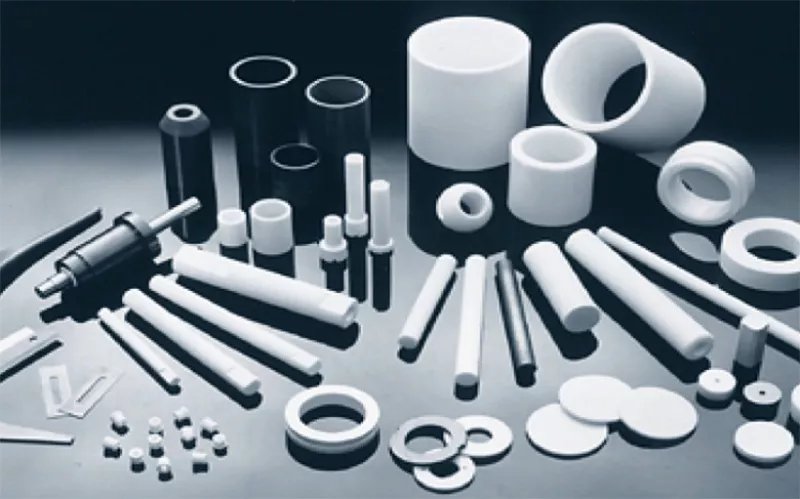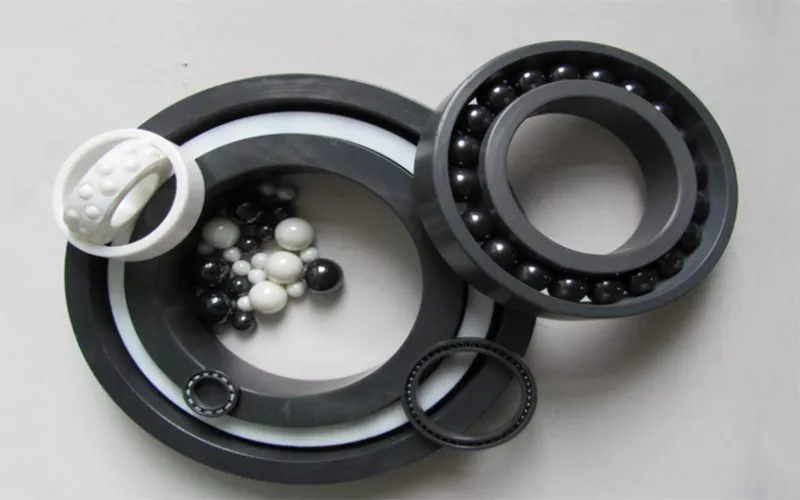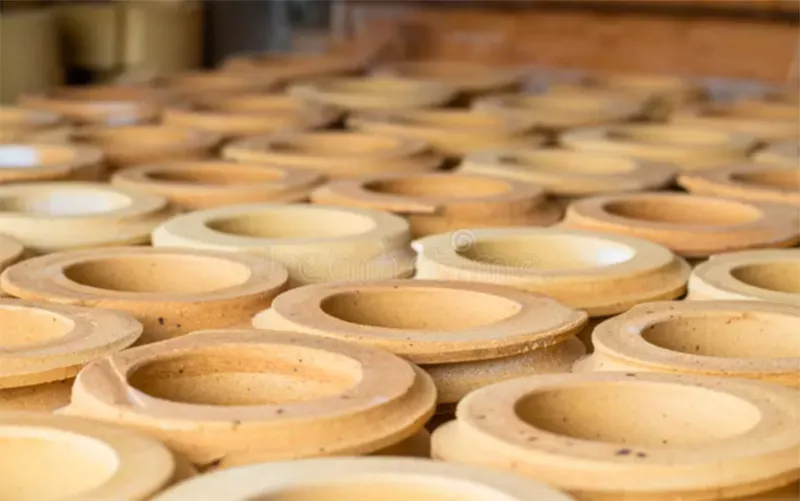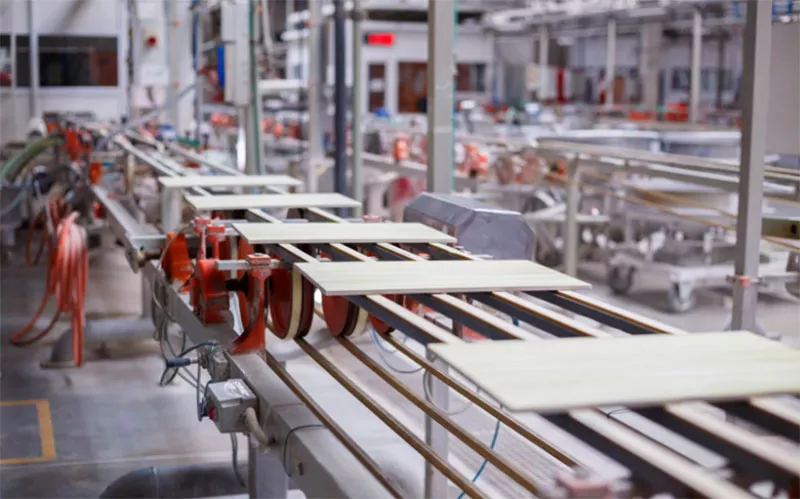Introducción

Some advanced ceramic materials are chosen for use by quite a good number of industries due to their high performance standards. They are said to be high performers because they possess the essential properties of ceramics needed to perform well even in extreme conditions. Not all ceramic materials can be termed as high-performance ceramics due to their differences in properties and ability to perform. Boron Nitride, for instance, will give a better performance output when compared to the likes of silica oxide or glass. So, today’s article will show you some of the best ceramic materials you can choose from for high-temperature applications. You will also learn about the properties that make these high-performance ceramic materials perform well in extreme environments. Let’s dive right in!
Characteristics of Ceramic Materials with High Performance
High-performance ceramics are advanced ceramic materials with the ability to perform efficiently under high temperatures, intense pressure, or unfavorable conditions. These can also be called high-temperature ceramics. They either possess properties that can withstand the effects of extreme conditions or are capable of adapting their structures to accommodate tough conditions. This ability is not common with regular ceramic materials, as only a few of them possess the properties of ceramics fit for high-temperature applications.
Examples of some of these high-performance ceramics are silicon carbide, boron nitride, aluminum oxide, boron carbide, zirconia oxide ceramics, silicon nitride, artificial diamond, etc. Considering the numerous characteristics of ceramic materials with high performance, silicon carbide, for instance, is a very hard ceramic material that even industrial machines with intense heat have no direct negative effects on it. This makes it suitable for the production of seal rings, engine bearings, automotive spare parts, machine rotors, etc.

Zirconia has an outstanding natural ability to stop wear and tear from destroying materials. It’s also used as a component for producing medical implants and enamels in the medical/dental field, why? It’s biocompatible and doesn’t wear off easily.
Boron nitride is an excellent electrical insulator material that is very affordable. Aluminum oxide is one of the best thermal conductors available in the ceramics market today. This makes it possible to be used as an efficient heat dissipator material or a ceramic feedthrough. Boron carbide’s lightweight makes it useful in nanotube technology, microprocessors, and the production of aeroplane parts. This reveals that the characteristics of materiales cerámicos with high performance are impressive and all-encompassing.
Honestly, there would be no need for any of these advanced ceramic materials if they were unable to consistently give this high performance. They were produced to help industries sort out applications that demand so much heat, temperature, and rigor of working environments.
Recent statistics show that ceramic materials like aluminum nitride, boron nitride, silicon carbide, and zirconia top daily market sales in the ceramic industry. With a sustained Compound Annual Growth Rate (CAGR) of 5.8%, the global market grew from $9.5 billion in 2023 to about $11 billion in 2024. Amazing right? That goes to say that so many people are investing and buying these high-performance ceramics. However, it’s essential that you buy the right quality from top ceramic suppliers like us at Cerámicas GGSCerámicas. We offer some of the best and reliable high-performance ceramics that will serve in several applications.
Here are some of the properties of ceramics with high performance that should make you consider them in your next ceramic project:
-
High hardness and compressive strength, as seen in Silicon Carbide and Boron Nitride.
-
Ability to withstand very high temperatures.
-
Impressive ceramic temperature range that falls between 2,200°C and 1,750°C.
-
High resistance to corrosion and harmful chemicals.
-
High wear and tear resistance, as in the case of zirconia oxide and boron nitride.
-
Bajo coeficiente de expansión térmica.
-
Low density.
-
Ability to conduct and at the same time insulate electricity efficiently.
-
Great thermal conductivity, ranging between 720 - 740 W/m.k
-
Excellent refractory materials and heat dissipators.
-
Durability and high fracture toughness.
-
Ability to withstand mechanical shock.
-
Thermal stability and a wide band gap that falls between 8 - 10.7 eV.
-
Bulk modulus ranges between 250 and 400 GPa.
-
High melting point above 2,500°C.
-
They are lightweight.
High Temperature Ceramics

Looking to get the best ceramic materials that can withstand high temperatures? Then this section will give you a quick ranking of the Top 5 based on their unique temperature range and cutting-edge technology.
-
Boron Nitride (BN) is a very hard ceramic material with a maximum temperature range of 2000°C.
-
Aluminum Nitride (AlN) is a tough thermal conductor and heat dissipator with a maximum temperature range of 1900°C.
-
Silicon Carbide (SiC) is the hardest advanced ceramic material with a maximum temperature range of about 1900°C.
-
Boron Carbide (B₄C) is a high-temperature ceramic material with a temperature range of 1800°C.
-
Alumina (Al₂O₃) is an excellent thermal conductor with a maximum temperature range of 1750°C.
General Industrial Uses of High-Performance Ceramic Materials

High-performance ceramics have a lot of impressive properties, which make a lot of industries today utilize them in several aspects. Here are some of the applications you can use these high-performance ceramics:
Campo médico
The medical field today has benefited greatly from the use of high-performance ceramics. Dentists now use zirconia-based enamels for teeth surgeries and beautification procedures. Zirconia, being a very biocompatible hard ceramic material with excellent resistance to wear and tear, comes in very handy in the medical world. It helps in the production of medically fit implants that won’t cause any negative reactions if used in the body. Biomedical engineers today favor the use of zirconia for production over any other material.
Electrical Industries
As an engineer, the electrical properties of ceramic materials with high temperature performance can be very helpful to you. Aluminum oxide, for example, is one of the best ceramic materials you can use for the production of high-performance power electronics, ceramic feedthroughs, and heat dissipators. The same can be said for nitruro de boro and boron carbide. These vital ceramic materials have changed the face of nanotube technology.
Industria de semiconductores
Without the impact of silicon carbide, some of the innovations you see the world experiencing today wouldn’t have been possible. Silicon carbide’s impact is huge in the semiconductor industry because it has essential properties like a wide bandgap and highly compressive hardness used in the production of upgraded semiconductors. These upgraded semiconductors can also be called third-generation semiconductors, and they are very fast-paced and efficient in whatever application you use them for. Whether it’s in the production of panels for power electronics, MOSFETs, LED Lights, computers, phones, micro-processors, etc. Silicon carbide has made it easy and achievable.
Metallurgical Industry
The metallurgical industry can’t be left out when discussing the usage of high-performance-based ceramics. High-strength metals, rods, machine ring bearings, seals, metal casings, furnace linings, etc., can only be produced and made efficient with the help of these highly rated ceramic materials.
Automotive and Aerospace Industry
Thanks to high-performance ceramics, the production of strong and efficient car parts, electric vehicles, silicon-based car batteries, airplane parts and engines, glass panels, etc., has been made possible. This is mainly due to the hardness, lightweight, and chemically inert nature of these high-temperature ceramics, like silicon carbide, boron nitride, etc.
Preguntas frecuentes
Why is zirconia ceramic used for medical implants?
Zirconia is mostly used for medical implants due to its chemically inert, highly wear-resistant, and biocompatible nature.
Which is the hardest and most wear-resistant material between silicon carbide and Zirconia?
Among technical ceramic materials, zirconia oxide ceramics are regarded as the best wear-resistant ceramics, while carburo de silicio is regarded as the hardest advanced ceramic material you can find.
What is regarded as the best ceramic temperature range?
The best ceramic temperature range should be between 2,200°C and 1750°C.
Conclusión
High-performance ceramics are shaping the future of technical ceramics. Modern manufacturers are taking advantage of their key properties, ranging from very high temperature resistance to excellent hardness, chemical inertness, electrical insulation, and thermal conductivity. With these amazing properties they possess, it’s no surprise that high-performance ceramics can actively help you in so many applications, depending on what you want. Currently, several industries globally are looking for the best grades for use in high-temperature applications. Therefore, you surely can’t go wrong if you invest. Join the moving train now!